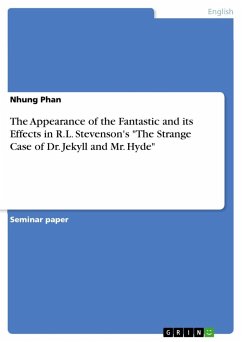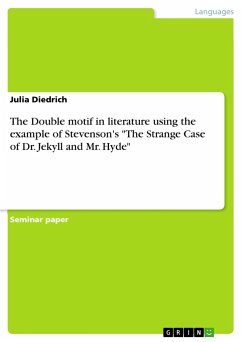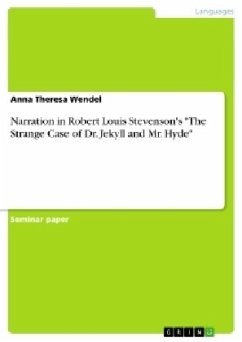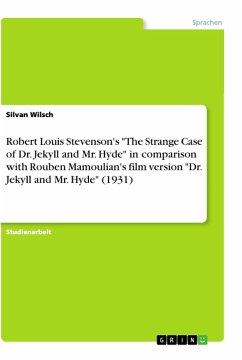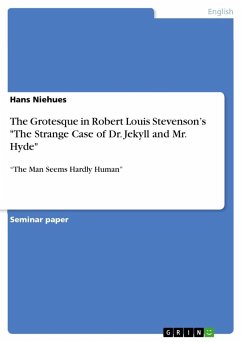Seminar paper from the year 2013 in the subject English Language and Literature Studies - Literature, grade: 1,0, University of Frankfurt (Main), course: Romance - Realism - Fantastic: Modes of Writing in the 19th Century, language: English, abstract: In her work The Fear of the Other, Schmidt analyses, inter alia, the motif of the Double as well as its appearance in 19th Century literature in the Gothic tradition. The quotation above expresses the definition of the double-ganger, also described as the wrong self, which is connected with antithetic values opposed to the prototype. Schmidt utilises the expressions such as 'First Self' for demonstrating the protagonist and 'Second Self' which designates the definition of the dark half or rather the alter ego. While describing the divided self and explaining the relationship between good and evil of the double-ganger, Schmidt rather focuses on the 'Second Self" and its multiple denotation, as "the Second Selves make their appearances either as instinct shadowlike figures, coming alive in the form of pictures or reversed as mirror images" (Schmid The Fear of the Other). These aforementioned double-ganger motifs are literary represented in a plethora of English narrations in both English Romanticism and in early 20th Century literature in the Gothic tradition. As social and personal identity crises were augmentative during the Romantic epoch, the literary double "serves to express an epoch's fear of the collapse of social values", therefore authors used the double motif in literature in order to "illustrate the issue of the fragmentability of the human soul" (36). While split personality was a feature of the prototype of a double-ganger in the Gothic genre, "the Second Self mostly contains aspects of the demonic, (...), the monstrous, (...) and is bound into a context of moral ambiguity" (ebda). These features demonstrate the "Second Self" as a diabolical alter ego, who always appears as a self-divided villain, marked by the uncanny and the evil.

